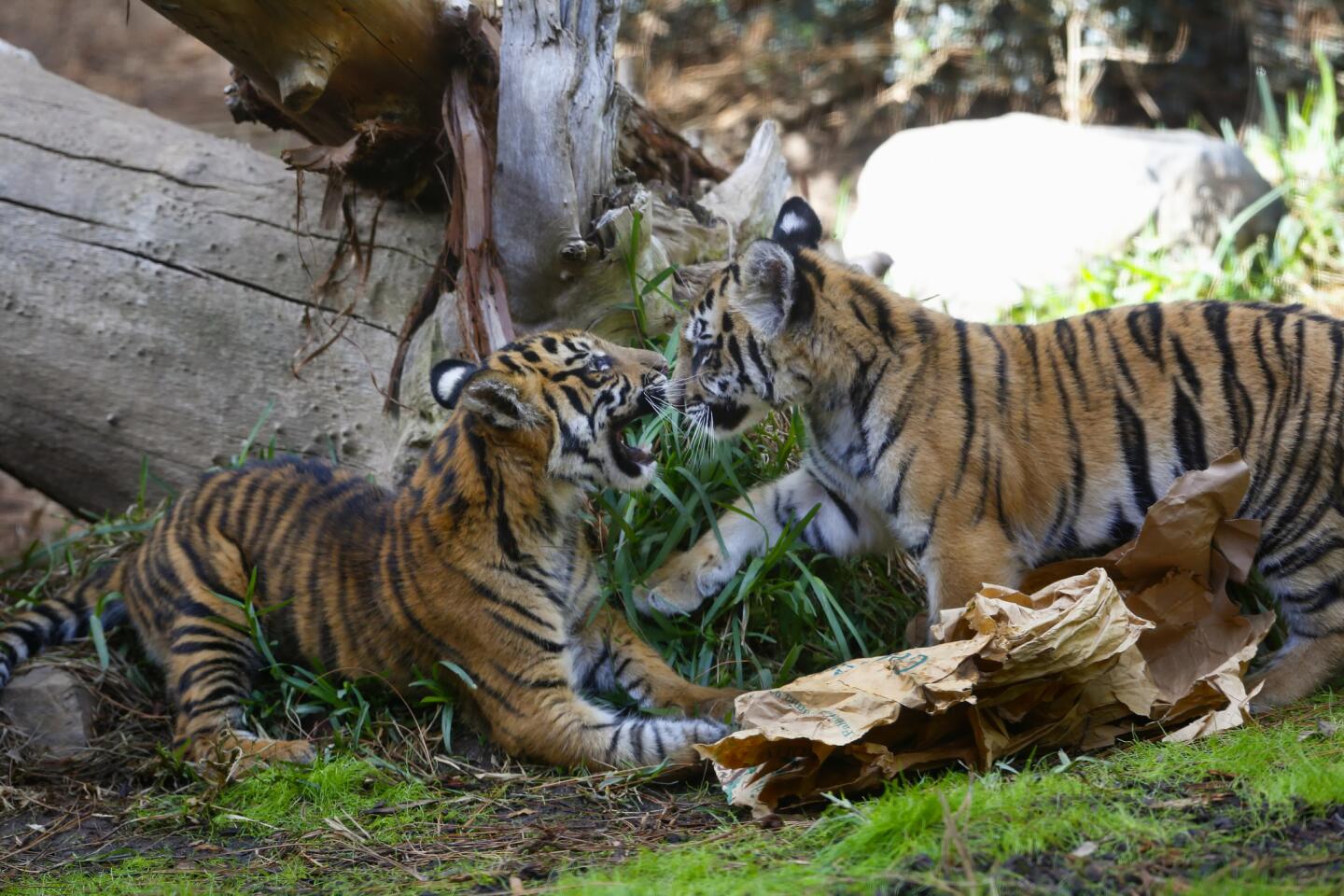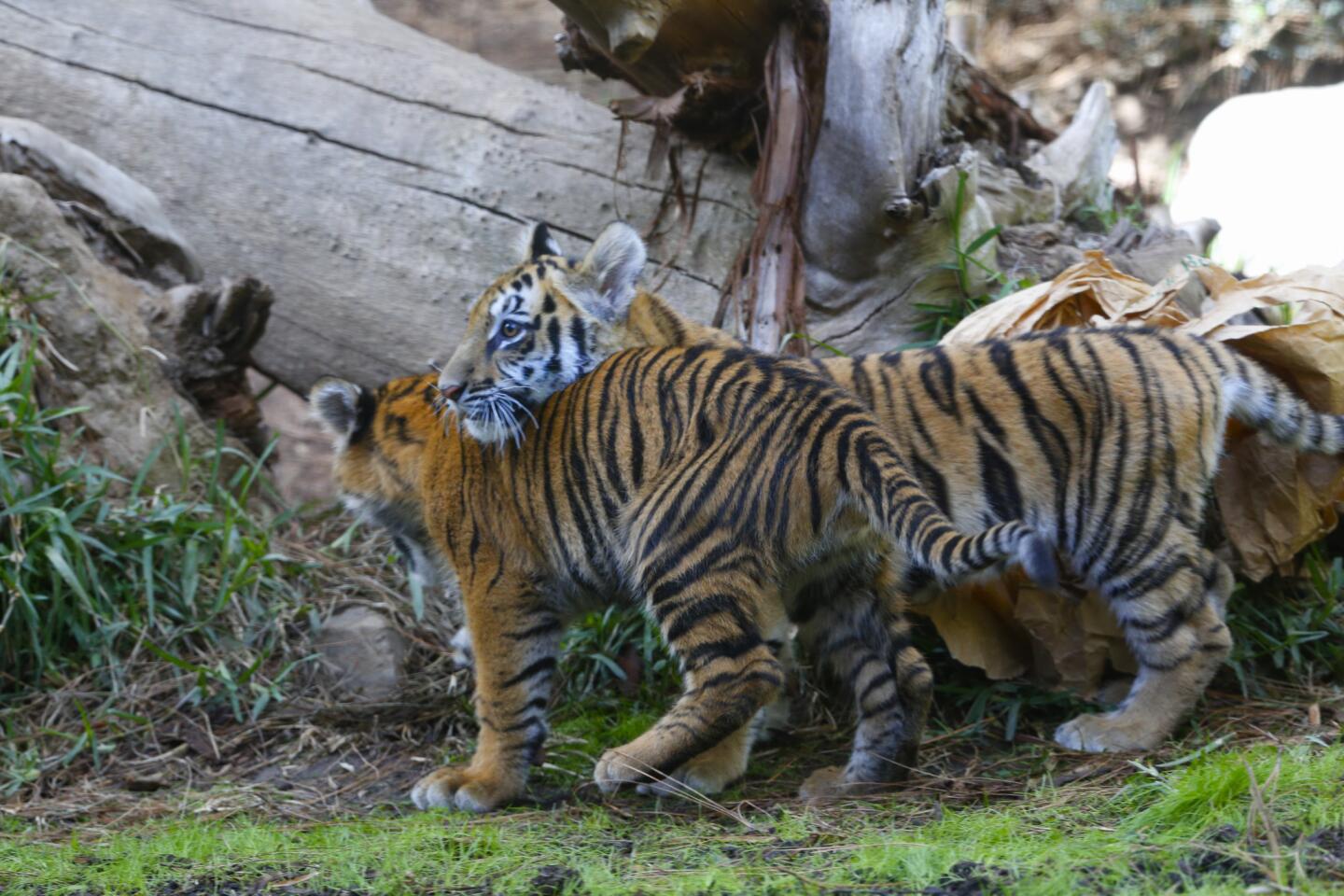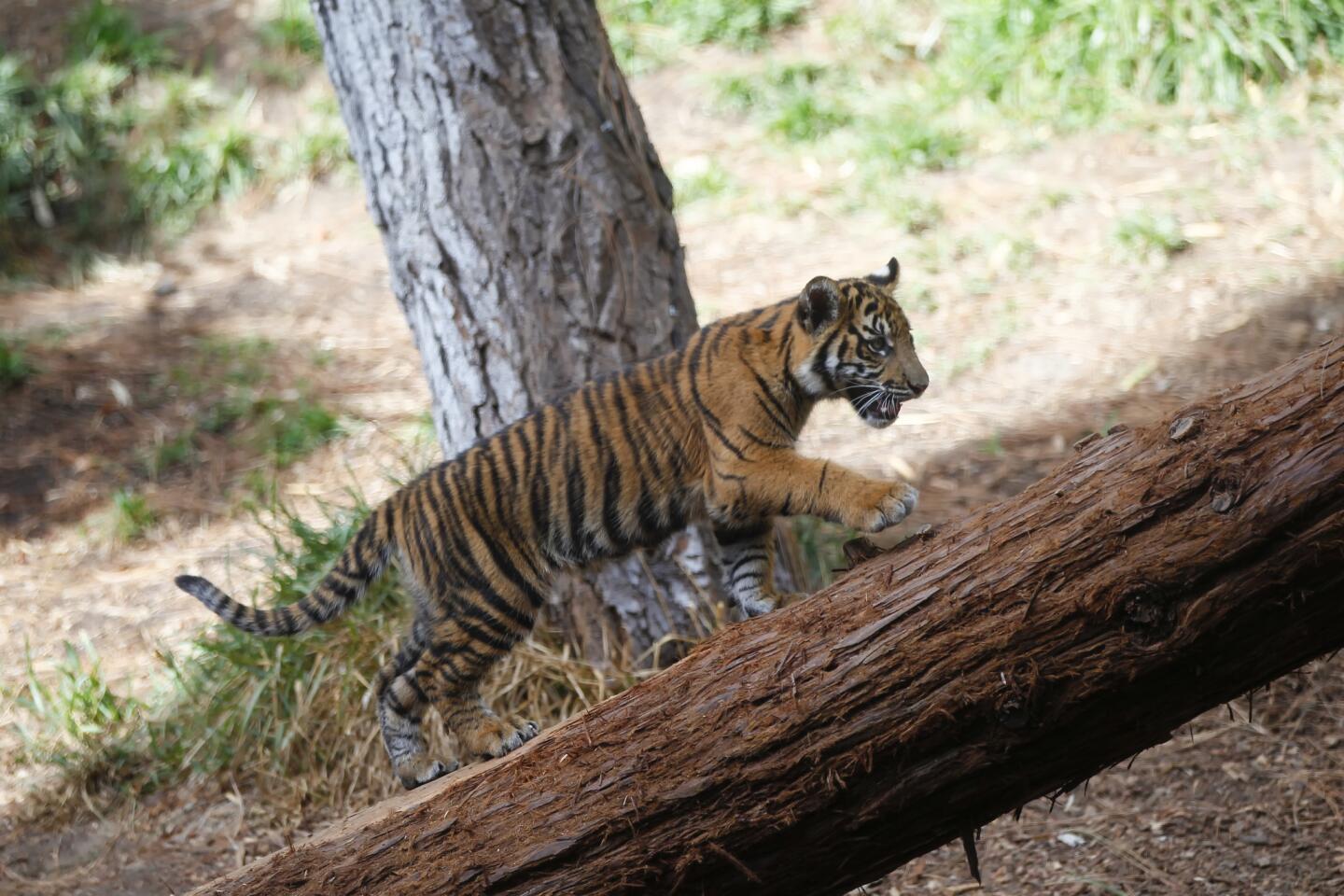Votes are in: Tiger cubs now have names

A rescued Bengal tiger cub and companion Sumatran tiger cub have been given their new names. Meet Moka, Bengal Tiger (lighter color) and Rakan, Sumatran Tiger
It’s official: After a week-long voting contest, a rescued Bengal tiger cub and a Sumatran tiger cub at the San Diego Zoo Safari Park now have names.
- The Bengal cub, confiscated in August from a smuggler, is now known as Moka, which means “chance.” The name got more than 1,700 votes.
- The Sumatran cub, sent from the Smithsonian’s National Zoo to be his companion, is now called Rakan, which means “friend.” That name got more than 2,400 online votes.
More than 11,000 votes were cast for a total of 12 choices. They were selected from six words in Bengali and Hindi for the Bengal cub; and Malay and Javanese for the Sumatran cub.
Both cubs are healthy and growing fast, said Lori Hieber, the Safari Park’s senior mammal keeper.
The Bengal cub, which only weighed about 10 pounds when confiscated, now weighs about 40 pounds, as does his companion. However, the Bengal cub will eventually outweigh his companion by about 200 pounds.
“They’re past the age that we’re able to go in and just hold them,” she said. “But we are currently still able to go in and have free contact interaction. Soon, they will be too large for us to safely interact with and we will move to protective contact due to their sheer size. We’re now in that phase of getting them to learn basic husbandry behaviors such as blood draws and health exams.”
Names are essential to the training, so individual animals recognize which commands are for them.
Up until now, the cubs have been referred to indirectly by several names, such as “Sumatran cub” or “Bengal cub,” Hieber said. Permanent names will make the process easier.
“It will be extraordinarily helpful for us when we do have names to associate with them when we’re calling them to come inside or come up to the exhibit,” she said. “And it will allow them to be better ambassadors for their causes of tiger conservation and fighting wildlife trafficking.”
“We train them to open their mouths on command so we can check out their teeth and their gums,” Hieber said. “We can check their temperature, check their blood pressure. In some cases do ultrasounds or radiographs. So that’s really the main purpose of the training that we do.”
To elicit these behaviors, the keepers rely on the universal motivator for cats: food.
“We have a whole arsenal of different food items, some solid, some liquid that we can use to reinforce them depending on the behavior that we’re trying to shape,” she said.
For emergency responses, the keepers use especially prized items, such as beef hearts, whole cow femurs and whole rabbits.
“One of the more significant things that we teach the tigers to do is to come running as fast as they can because they know that really high-ticket item is waiting for them,” she said.
Since tigers are solitary and territorial, the cubs won’t be placed in the same space with the Safari Park’s other tigers at Tiger Trail. However, they’ll be made aware of other tigers through their indoor sleeping quarters, which will separate them from another tiger by a mesh. The tigers will be able to see, hear and smell each other, but not come into direct contact.
What would you name these tiger cubs? The zoo wants to know!
Tiger cubs settle in at their new home
See Safari Park’s tiger cubs explore new habitat for first time
New playmate arrives for confiscated tiger cub
All together now: Awwwwww. An update on the confiscated tiger cub
Riverside County teen accused of trying to smuggle tiger cub into U.S. from Mexico
More to Read
Sign up for Essential California
The most important California stories and recommendations in your inbox every morning.
You may occasionally receive promotional content from the Los Angeles Times.
























